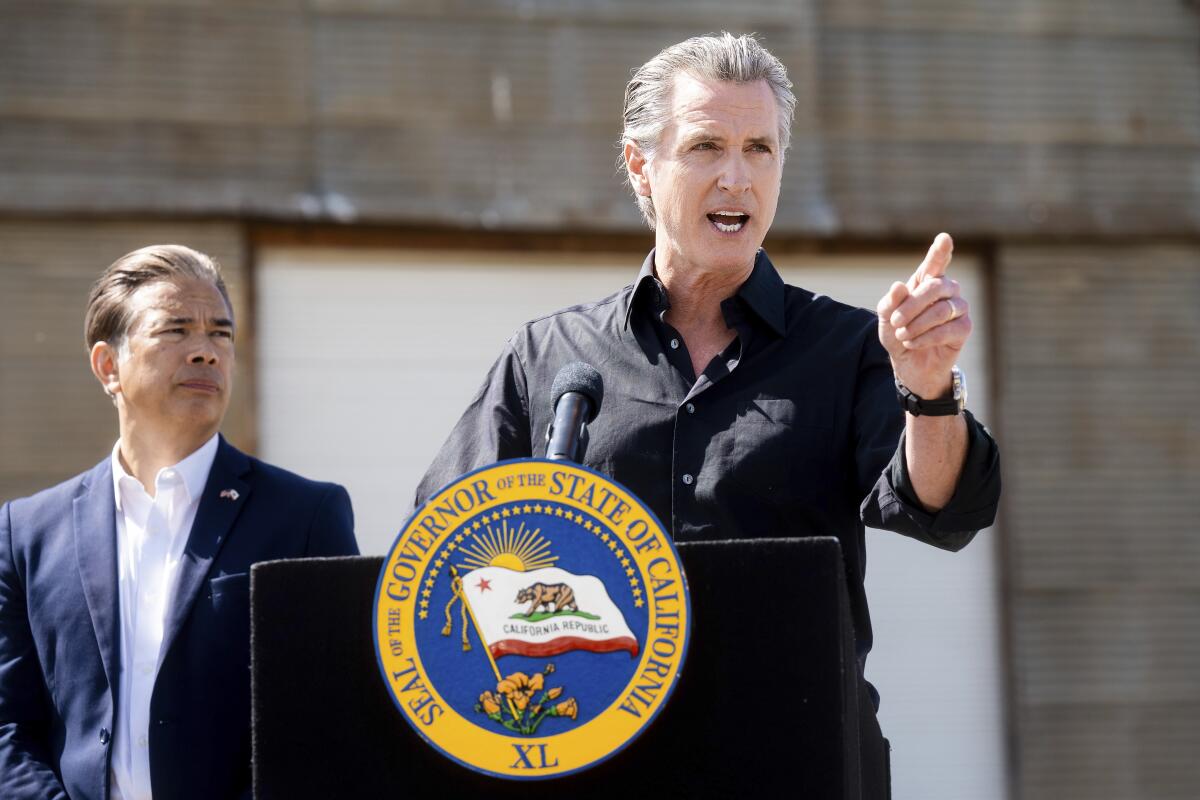California Governor Gavin Newsom is currently navigating a high-stakes political landscape as he places significant emphasis on a redistricting initiative that could shape not only the state’s electoral map but also his own future in politics. The implications of this maneuver are substantial, with potential consequences that could resonate well beyond the immediate electoral outcome.
Redrawing electoral district lines, known as redistricting, is frequently laden with political friction and strategic positioning. In California, this task holds significant importance because of the state’s large size and varied population. Newsom’s strategy for redistricting demonstrates a wider aim to strengthen his power in the Democratic Party and make sure his political goals resonate with the changing demographics of the state.
As Newsom pushes forward with his redistricting strategy, he faces a complex array of challenges. Critics argue that his efforts may be perceived as self-serving, potentially alienating moderate voters who could view such tactics as an attempt to manipulate the system for political gain. Should this initiative falter, the political fallout could be significant, leaving Newsom vulnerable to criticism and undermining his standing within the party.
The stakes are particularly high given the upcoming election cycles. With redistricting directly impacting congressional and state legislative districts, the outcomes could determine the balance of power in California’s government for years to come. Newsom’s political future could hinge on the success or failure of these redistricting efforts, making this an essential moment in his career.
Proponents of Newsom contend that his proposal for redistricting is essential to accommodate California’s evolving population characteristics. They highlight the state’s growing diversity, which requires a reassessment of district lines to guarantee equitable representation for every community. Newsom’s push for a fairer allocation of political influence seeks to rectify historical imbalances that have sidelined specific groups.
However, the political landscape is inherently unpredictable. Redistricting efforts often encounter legal challenges, and the potential for backlash from voters cannot be overlooked. If Newsom’s plan is met with resistance, it could energize opposition groups, complicating his efforts to maintain a solid Democratic majority in the state.
Along with the direct consequences for elections, this redistricting effort might have enduring impacts on the Democratic Party’s approach in California. While the party deals with internal disagreements and the necessity to engage a wide audience, Newsom’s guidance throughout this vital period will be observed attentively. Successfully managing these challenges could boost his image as an effective leader, while any missteps might raise questions about his political expertise.
Political analysts are keeping a keen eye on developments, acknowledging that California’s redistricting results might establish a model for related efforts throughout the nation. As states nationwide pursue their redistricting endeavors, Newsom’s strategy might impact how other governors and legislators plan in their respective areas.
Furthermore, there is a growing conversation within the Democratic Party about the importance of transparency and fairness in the redistricting process. As voters increasingly demand accountability from their elected officials, Newsom’s handling of this initiative will likely play a role in shaping perceptions of his leadership. The balance between political strategy and ethical governance is a tightrope that many politicians struggle to navigate, and Newsom’s actions will be under a microscope.
Within a larger political framework, Newsom’s initiatives for redrawing district lines extend beyond local issues. They mirror ongoing national conversations about election fairness, representation, and the power structures influencing political choices. As these debates progress, the consequences for Newsom’s future—and for the Democratic Party—will be more evident.
Ultimately, the success or failure of Newsom’s redistricting initiative will serve as a litmus test for his political resilience. Should he succeed in reshaping California’s electoral map in a way that reflects the state’s diversity and promotes fair representation, it could bolster his standing as a leader committed to progressive values. Conversely, if these efforts fail, the repercussions could echo throughout his political career, leaving him to contend with the fallout and the question of how to regain the trust of voters and party members alike.
As this situation continues to develop, it is evident that the stakes are high for Gavin Newsom. With the political landscape shifting rapidly, his ability to execute a successful redistricting strategy will be pivotal in defining not only his legacy but also the future trajectory of the Democratic Party in California. The coming months will undoubtedly be critical as Newsom seeks to navigate these challenges and solidify his position within the political arena.
